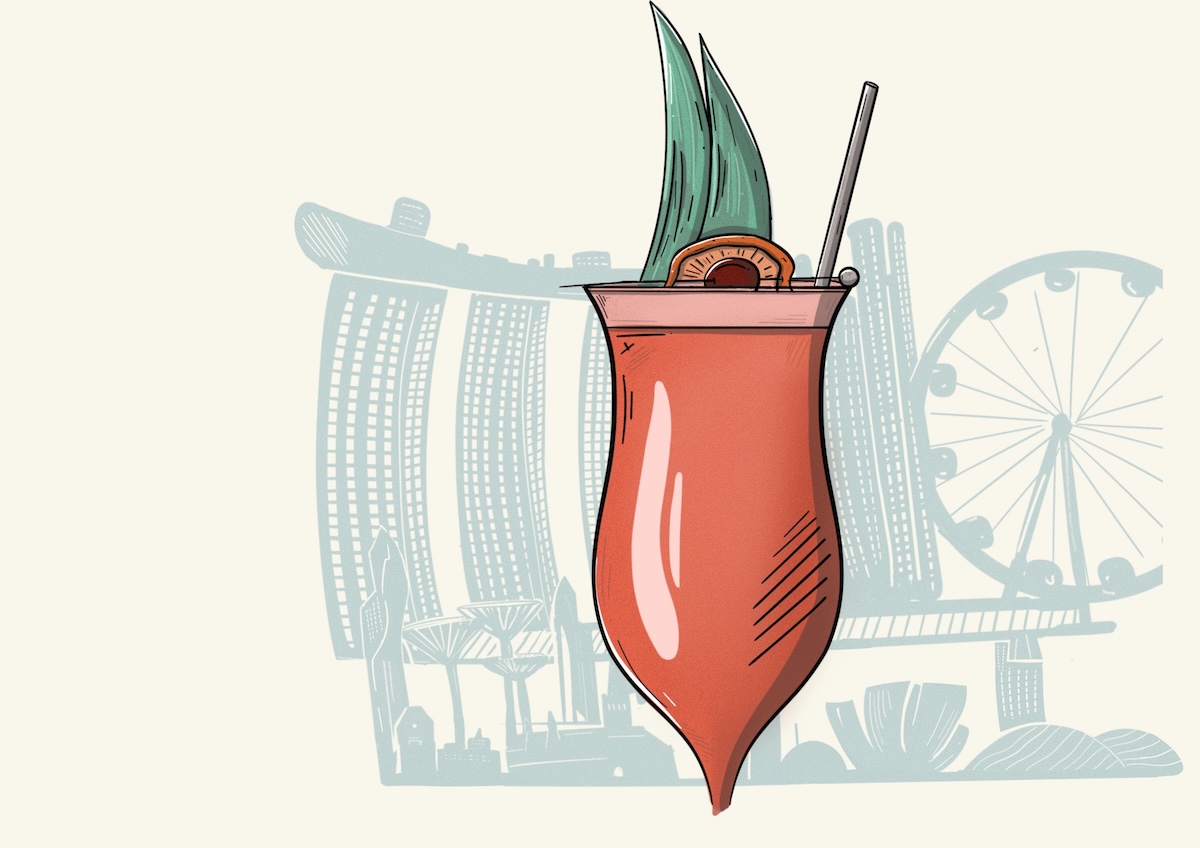The story of Asia cocktail culture is deeper and more influential than many realize, with roots stretching from colonial Singapore to prewar Japan. While the modern spotlight often shines on cities like Hong Kong or Bangkok, the true origins of Asia’s cocktail legacy are found in the ports, hotels, and hotel bars that first introduced Western spirits, service rituals, and innovation to the region.
Drinks historian David Wondrich famously wrote that the art of the mixed drink was born, matured, and spread globally between the American Revolution and Prohibition. But that same legacy also arrived in Asia—and transformed it.

The Tiger — Singapore and the Rise of the Sling
Small in size but massive in influence, Singapore has long been one of the world’s most important trade ports. Its location along major maritime routes made it a natural hub for goods, travelers, and ideas—including early cocktail culture. And it’s here that one of the world’s most debated drinks took shape: the Singapore Sling.
To understand the Sling, we have to look back. The word sling was used in the U.S. by the early 1800s to describe a drink made of spirit, lemon juice, sugar, and soda. Some historians, like Anistatia Miller and Jared Brown, argue that the American cocktail emerged when bitters were added to this base. Newspapers from the time even mention gin slings being served during political events—long before the word cocktail had a clear definition.
Singapore’s own version came later. After Sir Stamford Raffles founded the city in 1819, it became part of the British colonial holdings in Southeast Asia. By the mid-1800s, it joined Penang and Malacca as part of the Straits Settlements—a name that later found its way onto cocktail menus.
The historic Raffles Hotel is most closely tied to the Singapore Sling. Originally a private beach house, it became a full hotel by 1878 and was taken over by the Sarkies brothers in 1887. After renovations in the late 1890s by Tigran Sarkies, Raffles offered modern luxuries like ceiling fans, ice delivery, and the region’s first electric lights. But it was the Long Bar, a rustic watering hole relocated during renovations in the 1980s, that would make history.
In 1902, a tiger escaped from a traveling circus and hid beneath the bar’s billiards room—prompting what would become Singapore’s last tiger hunt, right under the future home of the city’s most iconic cocktail.
Between 1899 and 1915, Raffles bartenders were rumored to be mixing an early version of the Sling. According to hotel lore, women weren’t allowed to consume alcohol in public, so they typically drank fruit juices or tea. A sailor reportedly asked the bartender for a drink as red as a woman’s lips—and the Singapore Sling was born.

The credited inventor is Ngiam Tong Boon, a Chinese bartender from Hainan who started his career at the Adelphi Hotel before joining Raffles. He became known for his creativity and precision, and later family accounts painted him as a romantic figure who brought elegance to tropical mixology.
Yet the Sling’s history is anything but straightforward. Some records suggest Ngiam died in 1915—the same year the cocktail was supposedly invented. Even before that, drinks called Gin Sling, Straits Sling, or Commander were appearing in Singapore’s bars and clubs. A 1903 report mentions “pink slings for pale people,” while a 1913 article describes gentlemen mixing their own drinks at a cricket club using gin, cherry brandy, Bénédictine, lime, and soda.
The first recipe to resemble today’s Singapore Sling appears in Robert Vermeire’s 1922 book Cocktails: How to Mix Them. In the late 1920s, both “Straits Sling” and “Singapore Sling” were listed in The Savoy Cocktail Book, with differing specs. A 1930s handwritten recipe—possibly from Raffles—called for gin, Bénédictine, cherry brandy, lemongrass, and Angostura bitters.
When Roberto Pregarz took over as general manager of Raffles in 1967, he partnered with Ngiam’s grandson to revive the recipe. However, their version leaned toward the tiki trend of the time—sweeter, fruitier, and designed to appeal to tourists.
Today, most modern versions of the drink include gin, cherry brandy, lemon juice, soda water, and sometimes pineapple juice—though the latter likely wasn’t part of the original. One constant remains: the Singapore Sling is one of the most enduring icons of Asia cocktail culture.




